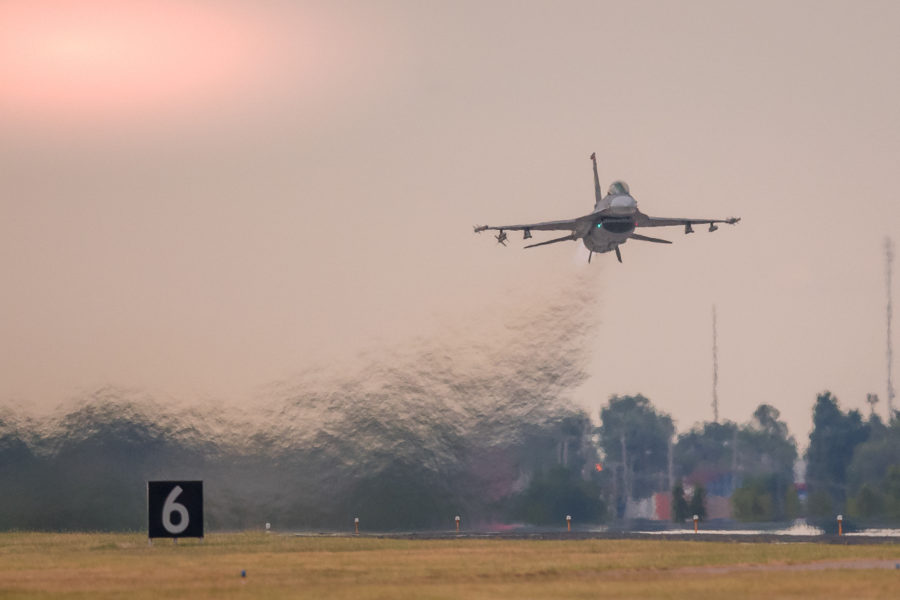An F-22 crashed on landing at Eglin Air Force Base, Fla., and an Oklahoma Air National Guard F-16 crashed in western Louisiana in separate incidents March 22 and 23, respectively.
The landing gear of the F-22, from the 325th Fighter Wing, collapsed on landing at 10:25 a.m. local time March 22. The pilot was checked out at the base hospital and found to be “in good condition,” a 325th spokesperson said. The jet was conducting a training mission, as opposed to an operational sortie.
An F-16 belonging to the Oklahoma Air National Guard’s 138th Fighter Wing crashed in a woodland area near the Louisiana-Texas border about 11:15 a.m. March 23, but the pilot ejected, was recovered, and was being medically evaluated, an Air National Guard spokesperson said.
The F-16 crashed south of Fort Polk Joint Readiness Training Center in Louisiana. The pilot was taken to the facility after landing. Further details were not available.
The extent of damage to the F-22 has not yet been assessed, and the F-16 is presumed to be a total loss.
An F-22 experienced an almost identical landing gear collapse accident a year ago, on March 15, 2021, which also involved a jet from the 325th Fighter Wing at Eglin. The unit has been operating out of Eglin since Hurricane Michael destroyed most of its assigned operating location, Tyndall Air Force Base, in 2018. Landing gear mishaps have been a continuing problem for the F-22 fleet.
The F-22 fleet of some 182 aircraft has experienced 32 “Class A” mishaps and 50 “Class B” mishaps over the 21-year life of the program. A Class A accident entails a fatality or loss of the aircraft or incurs more than $2.5 million worth of damage. A Class B accident is one causing serious injury and/or damage valued at between $500,000 and $2.5 million. F-22 accidents of all types have increased substantially since 2015.
There have been 25 Class A mishaps involving USAF F-16s since 2015, including three in the past year, one of which was fatal to the pilot.
Air Force officials said that although multiple crashes so close together in time have sometimes prompted a fleetwide safety stand-down, that is not being considered because the accidents involved different aircraft types, under very different circumstances, with no common thread. However, one official said wing commanders may be urged or directed to use the two accidents to highlight the importance of safety and to issue reminders to this effect.
